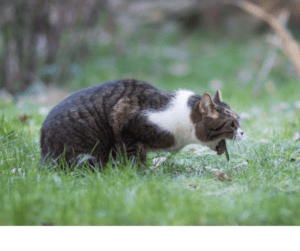A fur parent’s worst nightmare is to see their babies suffer from various health illnesses or contagious viral infections like parvo. It is, unfortunately, a common and deadly illness for dogs.
On the question of whether we can give water to dogs with parvo, the most straightforward answer is yes. However, there are more things you need to understand.
One of the complications that trigger death among infected dogs is dehydration. Therefore, when your dog doesn’t take water, you may use a syringe to give your dog distilled water until you go to the vet. This is to prevent dehydration and provide a greater chance of saving your dog.
The Causes, Symptoms, and Treatment For Parvo Disease
In learning more about giving water to dogs with parvo, it is better to understand the causes, symptoms, and parvo dog disease treatments first.
An infectious canine parvovirus (CPV), commonly known as parvo, highly infects puppies and unvaccinated dogs. The virus is present in any environment, although it does not infect every dog that comes into contact with it.
Main Causes Of Parvo Transmission
There are two possible types of parvo transmission, direct and indirect contact. A dog that has been infected with parvo can directly pass on the disease to a susceptible dog, which is usually those with weak immune systems. Meanwhile, indirect transmission of the virus is alarming as it could come from infected dogs’ feces and contaminated objects.
Also, you might not be aware that you’re a possible carrier of the virus since parvo can also be transmitted into your home through the soles of shoes (in some cases). Therefore, vets insist on complete vaccination against parvo because it is exceedingly contagious.
Even though vaccination reduces the risk of parvo disease in vaccinated dogs, it is still prevalent today.
Discussing Parvo Symptoms
Within three to seven days of being infected, your dog would likely display symptoms. Parvovirus is diagnosed by a veterinarian based on clinical indications and a series of blood tests.
What are the signs of parvo for a dog? Well, a dog diagnosed with parvo shows the behavior of fatigue, social withdrawal, and absence of appetite or water and food decline, which is then followed by vomiting, diarrhea, and fever.
In the worst case, parvovirus may reach the bone marrow and target immune cells, causing a decrease in the number of protecting white blood cells. This disrupts the immune system’s function to defend itself, placing the gastrointestinal tract at risk.
Get Your Dog Treated Immediately!

If you think that your dog may have parvo, contact your veterinarian and let them know of the symptoms you see. This is so they may take the necessary quarantine measures for your dog to stop the disease from spreading. It is important to consider medical interventions since parvo is a deadly virus.
In reality, not all dog owners can afford dog hospitalization, so they tend to treat their dogs independently. However, there’s no home remedy for parvovirus, and it may even lessen your dog’s chances of survival.
However, you can apply outpatient treatments like subcutaneous fluids for dehydration and antiemetic for vomiting if a dog shows mild parvo symptoms. Your vet can also help guide you in administering antidiarrheals because the process may be tricky.
Undoubtedly, dog hospitalization could provide a more responsive treatment for the dog’s symptoms, including intravenous fluids, correction of electrolyte imbalances, and focus on the dog’s nutrition.
Thus, the inability to send their dog to the vet could also be why questions like “can we give water to dogs with parvo” frequently occur.
Conclusion
The best way to prevent parvo infection is to get a vaccine for your dogs on time. To identify them as “fully vaccinated,” your dog must receive a booster shot at one year. Vaccination is necessary every one to three years throughout their life.
Furthermore, giving your dog a safe and healthy environment is crucial to prevent the disease from recurring. Make sure to thoroughly clean your home. Plus, prevent your pets from sharing toys and beddings to limit the chances of infection.
If you want to support the initiative of Doobert in extending aid to animal welfare, don’t hesitate to volunteer, adopt, and be part of the cause! You are just a few clicks and taps away into providing a brighter future for animals in need.






